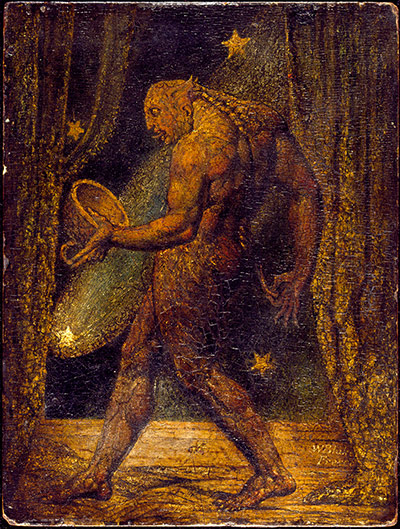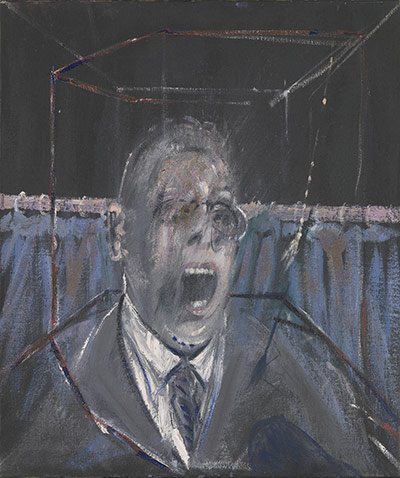
William Blake, The Ghost of a Flea (c1819-20) Photograph: Tate
I always wanted to do big things when I was younger. I thought big is good ... So when I came across the Blake painting, I thought: 'What is it? It takes you in there. It's dark, and it's scary, and it has this huge scale.' Then you think: 'Where is the flea? What is the flea? Why is it the ghost of a flea?' It was probably the most frightening image I'd ever seen. It seduces you; it asks so many questions, but doesn’t answer them. I really enjoyed thinking about it and looking at it. I went back and saw it a few times. Later, I looked at all Blake’s work, but it didn’t have the same power as that image. It has that David Lynch feel to it, hasn’t it?

Francis Bacon, Study for a Portrait (1952)
An image can be anything and can come from anywhere, and you can use anything available to create that image – and Bacon created unforgettable images that you can’t get out of your head ... I think art is one plus one equals three. But it’s a third thing and a fourth thing and a fifth thing – things start to happen. You can’t look at that curtain in the Bacon painting Study for a Portrait, for example, and answer the question of it without seeing everything else. So that's what the problem is. And once you do that, you can’t look at the face of the guy without looking at the box. You don't doubt that you know why he's screaming, but what is he screaming about? Photograph: Estate of Francis Bacon. All Rights Reserved, DACS 2012

No hay comentarios:
Publicar un comentario